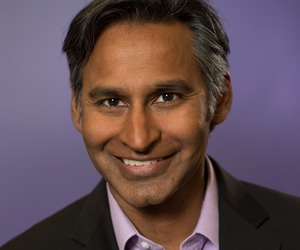Where Is Healthcare Marketing Headed In 2020 and Beyond?

Sanjay Dholakia, Chief Marketing Officer of Marketo
In early April, the Economist Intelligence Unit released results of its latest survey of top marketing executives, The Path to 2020: Marketers Seize the Customer Experience, commissioned by marketing automation company Marketo. The report captures the insights and opinions of global marketing leaders spanning multiple industries.
We followed up with Marketo’s Chief Marketing Officer Sanjay Dholakia and asked him to comment on the survey insights through the specific lens of healthcare marketing.
eHST: In the healthcare case study included in the Path to 2020 report, two trends are identified:
- Healthcare is moving away from hospitals into the home and daily life. Home monitoring and remote diagnostic technologies are providing medical professionals and caregivers with an ongoing, remote picture of a patient’s condition.
- Healthcare is migrating outside of traditional hospital and clinic settings with a greater focus on personal responsibility for health. In this case, the primary healthcare marketing goal is to help a patient make a lifestyle change. As such, healthcare marketers are taking more holistic approaches for engaging patients across a range of medical, nutritional, physical fitness, and community-oriented contexts.
Both of these trends are clinical in nature. How do you see the role of marketers overlapping with clinicians, or enhancing the ability of clinicians to better facilitate behavior change?
SD: There is, in my opinion, an inexorable trend toward healthcare outside of the clinical setting. If you think about it, I spend an hour per year at my annual physical, but every single moment outside of that, I am responsible for my own health. With the advent of technology, we can be connected with our clinicians without having to be physically in their offices.
From the marketer’s perspective, technology provides a multitude of fresh opportunities to engage with patients outside of the clinical setting and to get them to pay attention to their own health. This means that these interactions can help to inform the clinician’s view of a patient, leading to a more accurate health profile that in turn betters health outcomes.
Clinicians can pick up on early signals about an individual’s behaviors and relative health, opening the door for more preventative care. This is opposed to me just showing up and telling you where it hurts or how often I worked out, which could be inaccurate, or—in the case of my gym habits—a downright lie.
For more insights from Dholakia, including the skills required for effective healthcare CMOs over the next several years, read our full article now: Healthcare Marketing and the Path to 2020.
Best regards,
Matt Humphrey
President

